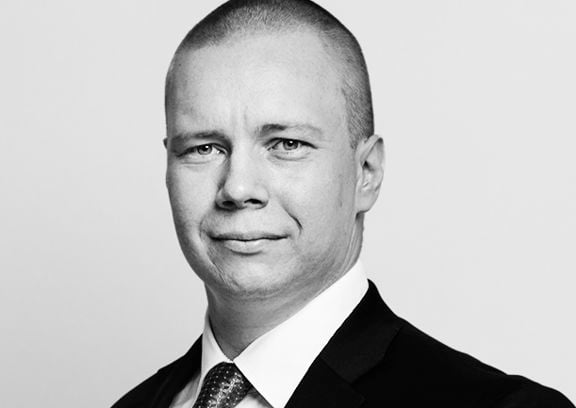IR BLOG
Topdanmark - Profitable growth in Denmark

Over the years, Sampo has become a major shareholder in the Danish insurance company Topdanmark.
In 2011, Sampo’s holding exceeded 20 per cent and Topdanmark became our associated company. At the moment, Sampo owns 46.7 per cent of Topdanmark and the company has been consolidated as a subsidiary since September 2017.
| Topdanmark's key figures (as reported by Topdanmark stand-alone) |
2018 | 2017 |
|---|---|---|
| Premiums, Non-life, DKKm | 9,135 | 8,985 |
| Premiums, Life, DKKm | 10,111 | 8,525 |
| Profit before taxes, DKKm | 1,702 | 2,235 |
| Combined ratio, % | 83.6 | 82.0 |
| Combined ratio excl. run-offs, % | 87.5 | 85.8 |
| Earnings per share, DKK | 15.4 | 20.2 |
| Dividend per share, DKK (*Board's proposal) | 15.0* | 19.0 |
We will let Peter Hermann, the CEO of Topdanmark, tell you more about the company.
In a nutshell, what is Topdanmark?
“Topdanmark is a non-life and life insurance company focusing 100 per cent on the Danish market. The market share in non-life and life insurance are 17 per cent and 10 per cent respectively.
In non-life we create value for our shareholders by running an efficient operation focusing on the private and the commercial segments where profitability is high and volatility in earnings is low. Over the years, we have developed Topdanmark into a robust business model with low and stable combined ratios.
In life insurance Topdanmark has been growing rapidly in recent years increasing the market share from 4,8 per cent in 2014 to approximately 10 per cent in 2018.
Being a big player in both non-life and life insurance gives us synergies, but it also gives us better opportunities to do cross-selling. Customers, who have both non-life and life products in the same company are more loyal and feel that they get more value, than those, who have only one type of products. Thus, being big domestically is good for us but more importantly, it is good for our customers.
How would you describe the market environment and competition in Denmark?
“The Danish non-life and life markets are dominated by few large players and have been further consolidated during 2018. In non-life, the competition is relatively disciplined, even though we are competing from door to door. The market is dominated by six listed players representing a total market share of 72 per cent. All six players have profitability at the top of their agenda.
Similarly, the life market is now dominated by five players as two M&A’s took place in 2018 among the largest life companies.”
How does Topdanmark differ from its competitors?
“As the only player on the market, Topdanmark has a market share of 10 per cent or more in both non-life and life insurance. Topdanmark will exploit the synergies selling both non-life and life products as well as utilizing the economies of scale providing non-life and life insurances in one group.
Furthermore, Topdanmark focuses 100 per cent on the Danish market. This is the market we know best, and it will continue to have our management’s full attention. We are often asked why don’t we export our efficient business model to other countries?” Well, we have absolutely no intention of expanding abroad. Shareholder value could very well be destroyed, as we believe that the required return on the Topdanmark share would increase if we expand into less disciplined markets.
Finally, in the non-life market we focus on the low end of the market – the private segment and in the agricultural and SME segment. These are segments with high claims frequency, but low average claims. Combined with risk-based prices and a comprehensive reinsurance program, this implies low volatility in our earnings and relatively low and stable combined ratios. “
What are Topdanmark’s key drivers for growth and profitability?
“Our mantra is: Profitable growth – in that order!
Besides the advantage of being the only insurance company with a significant exposure within both non-life and life we want Topdanmark to differentiate from other players in the market by being best at risk management, having the strongest distribution power and being the best at customer relations.
Topdanmark’s pricing policy is based on the specific risk of each and every customer. As a result, we are being competitive pricewise for low risk customers in the market. Our disciplined pricing strategy has supported the stable profitability of our portfolio.
On the distribution side, we have invested in improving our efficiency through our own distribution channels as well as through exclusive distribution agreements with Sydbank and most recently with COOP, a large Danish supermarket chain. In addition, we are looking more into digital platforms as new distribution channels. Co-operation with COOP is a good example of that. Over 50 per cent of sales under this agreement is fully digital and the rest partially digital.
Finally, we focus intensely on customer relations. As an example, our share of ambassador customers has since 2010 increased from 34 to 47 per cent. Ambassador customers are customers who recommend Topdanmark to neighbours, colleagues and family.
In general, it is cheaper to keep the existing customers than get new ones. Furthermore, profitability is higher for existing customers than for new customers. That is why customer loyalty is an important driver for profitable growth for Topdanmark. Our strong focus on customer satisfaction has helped increase the retention rate in both the personal and the SME segment.”
How will the technology trends (digitalization, automatization, AI…) change the insurance industry?
“We believe that the winners in the insurance industry will be the companies that are best at combining implementation of new technology with the basic underlying skills of effective risk selection and data analysis. Technology helps us to increase our profitability but what is more important, it will provide better service for our customers.
We have initiated a range of measures to increase efficiency and automate a significant part of our business processes by way of:
Digitalisation – where we will provide further self-service solutions to our customers, such as online claims handling and online sales. Initially we have invested in online claims handling. As a result, 62% of all claims were reported digitally in 2018. We will now focus a bit more on digital sales.
Efficiency improvement – We aim to be more prompt and reduce expenses and we will improve the efficiency of the customer supporting processes. In recent years we have invested in automation by using robotics and machine learning. 51 processes are being executed via robot process automation and we have handled more than 1 million transactions by using robotics.
In our guidance for 2019, we are forecasting a combined ratio between 89 and 90 per cent exclusive run-offs. This is the first time we are guiding a combined ratio below 90 per cent at the beginning of the year. Among other things, this is due to efficiency gains improving the combined ratio of approximately 1 percentage point”.
